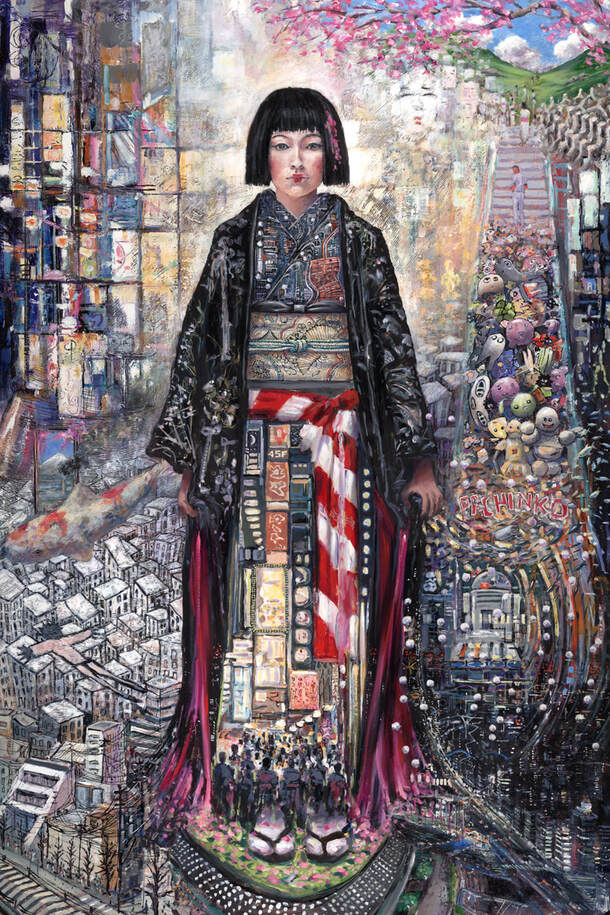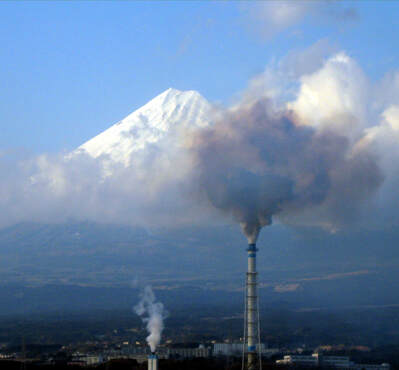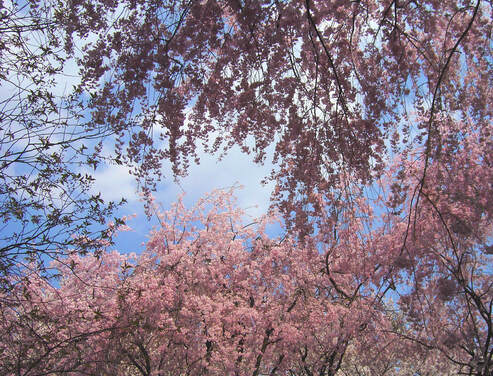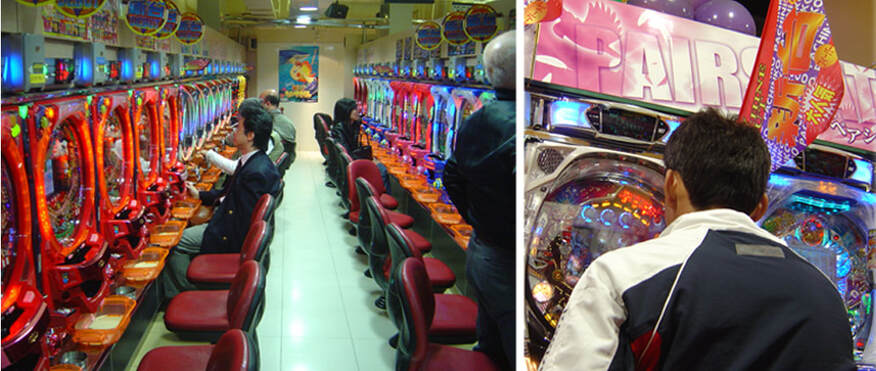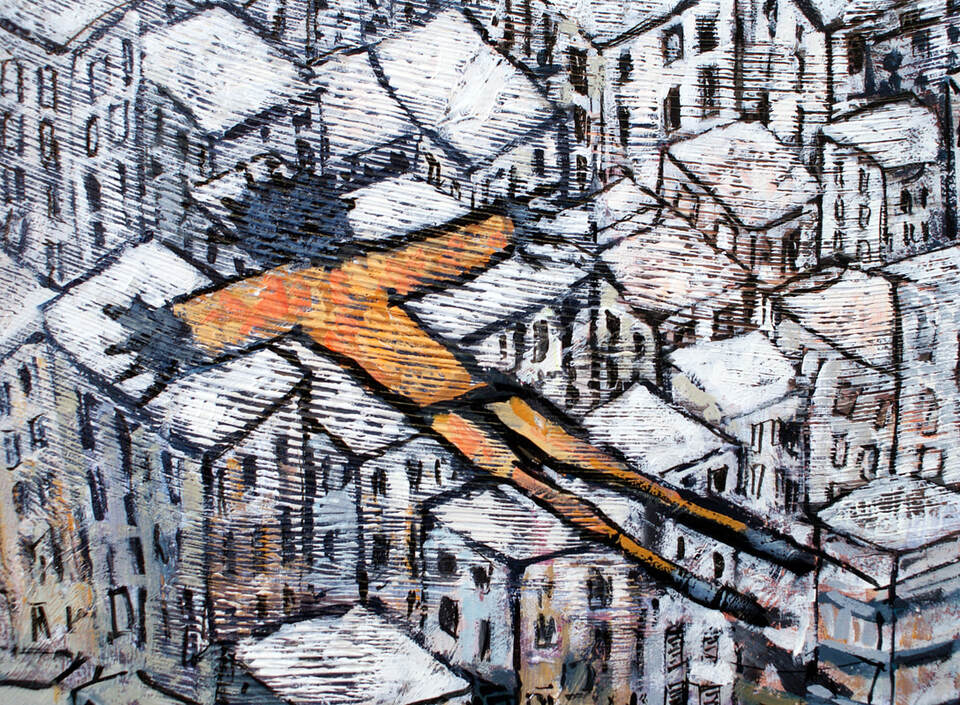TOKYO TIME 160cm x 107cm Acrylic on Board
Text from the book
"Behind the Kimono"
"Behind the Kimono"
Andy describes his first impressions of Japan as an overwhelming attack on the senses followed by an intense curiosity to discover their contemporary culture in more depth.
“Initially fascinated by the history and social politics of Japan, I quickly found inspiration to unpeel the intricate layers of the country, from its rich cultural history to the complexity of the urban society and landscape. As I looked further I discovered both unique and shared social struggles, the unfamiliar layered onto the familiar”.
Initially conceived as a one off painting, Tokyo Time was made (like many of his works) almost as a filmic collection of tableaus rich in narrative. At the heart is the impassive Geisha, her costume with old and modern patterning, around which both thoughts and pictorial symbols collide. From the neon of Tokyo, to the grace of Mount Fiji, from Koi to the Pachinko gambling machines, we see a striking feast of images.
As Andy says “The blanket of forms are intentionally decorative, the choice of symbols informed not only by my narrative but also the balance of the work “as a painting”. For example in the top section I suggest the turbulent Neon city as an expressive abstract, moving through a dense yet soft “Turneresque” light that frames the Geisha’s head to an imagined rural heaven. This space is fed by the technology of an elevator yet leads out of the urban chaos to the ancient fantasy (itself informed by their anime) that paradise is a safe unseismic landscape of rolling Spring pastures fed by crisp billowing clouds.
As for the Kimono as muse, Andy Says “I was impressed by the late Donald Richie’s explanation in his book “The Image Factory” that this famous costume (among many other symbols) was essentially a shell of conformity and moderation in the same way Western suites and ties confirm a measure of egalitarianism. As with the recently described counterpoint between the city and nature, the doll-like Geisha with modern hair stares impassively to us, opening the confessional curtain of her robe to the culture of the city and circuit board, to a brave future, like the fallen blossom at her feet that has arrived and may yet dissipate as quickly.
Tokyo time represents to Andy an opening "idea palette" that later informed works of more specific experiences.
Further Notes;
Photos and text by Andy below
“Initially fascinated by the history and social politics of Japan, I quickly found inspiration to unpeel the intricate layers of the country, from its rich cultural history to the complexity of the urban society and landscape. As I looked further I discovered both unique and shared social struggles, the unfamiliar layered onto the familiar”.
Initially conceived as a one off painting, Tokyo Time was made (like many of his works) almost as a filmic collection of tableaus rich in narrative. At the heart is the impassive Geisha, her costume with old and modern patterning, around which both thoughts and pictorial symbols collide. From the neon of Tokyo, to the grace of Mount Fiji, from Koi to the Pachinko gambling machines, we see a striking feast of images.
As Andy says “The blanket of forms are intentionally decorative, the choice of symbols informed not only by my narrative but also the balance of the work “as a painting”. For example in the top section I suggest the turbulent Neon city as an expressive abstract, moving through a dense yet soft “Turneresque” light that frames the Geisha’s head to an imagined rural heaven. This space is fed by the technology of an elevator yet leads out of the urban chaos to the ancient fantasy (itself informed by their anime) that paradise is a safe unseismic landscape of rolling Spring pastures fed by crisp billowing clouds.
As for the Kimono as muse, Andy Says “I was impressed by the late Donald Richie’s explanation in his book “The Image Factory” that this famous costume (among many other symbols) was essentially a shell of conformity and moderation in the same way Western suites and ties confirm a measure of egalitarianism. As with the recently described counterpoint between the city and nature, the doll-like Geisha with modern hair stares impassively to us, opening the confessional curtain of her robe to the culture of the city and circuit board, to a brave future, like the fallen blossom at her feet that has arrived and may yet dissipate as quickly.
Tokyo time represents to Andy an opening "idea palette" that later informed works of more specific experiences.
Further Notes;
Photos and text by Andy below
THE ENVIRONMENT
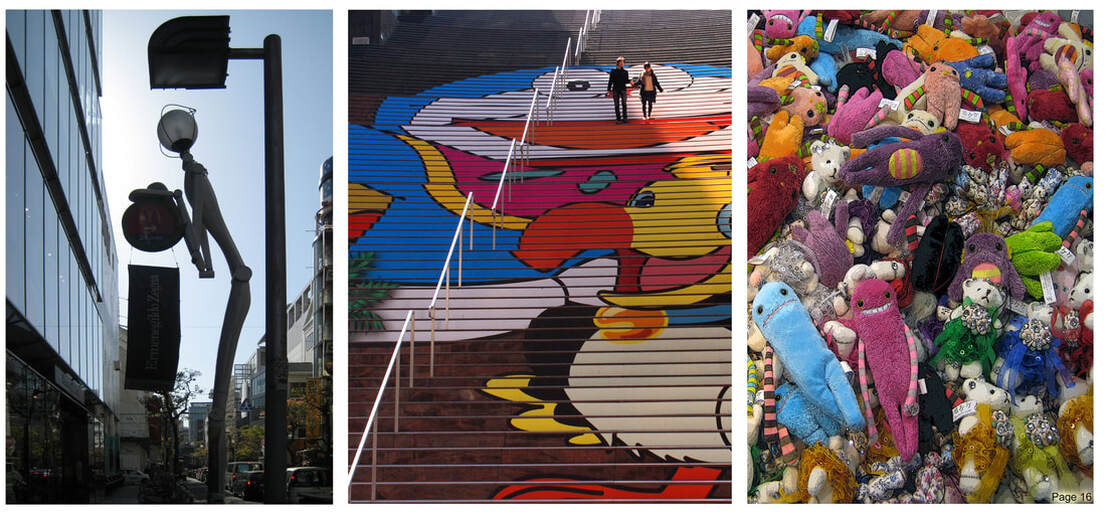 KAWAII or "cute" invades nearly everything in Japan, from toys to street architecture. It is often thought that demanding childhoods seeking competitive school places and harsh working conditions contribute towards a yearning for a lost innocence, even with middle aged men. Whatever the reasons, the effects can at times elevate beyond mawkish sentiment to quite arresting and original forms.
KAWAII or "cute" invades nearly everything in Japan, from toys to street architecture. It is often thought that demanding childhoods seeking competitive school places and harsh working conditions contribute towards a yearning for a lost innocence, even with middle aged men. Whatever the reasons, the effects can at times elevate beyond mawkish sentiment to quite arresting and original forms.
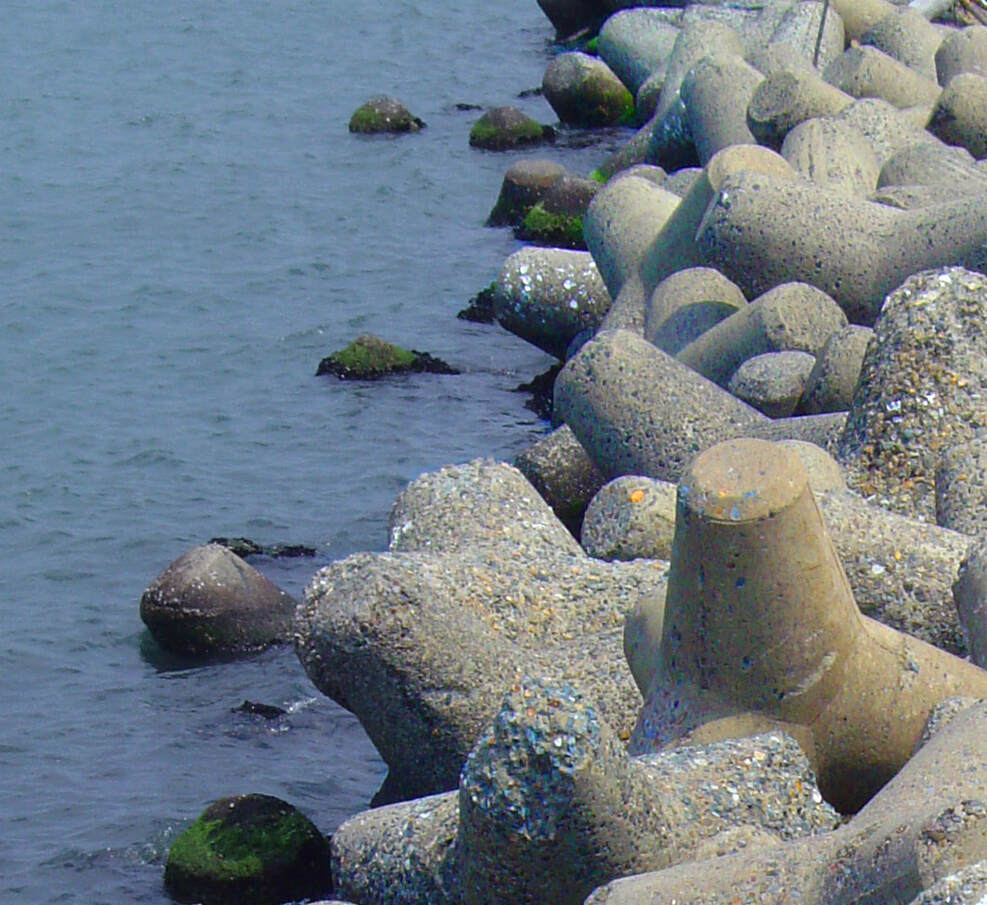
Perhaps the only lasting monument to the Japanese in the far future, concrete anti-erosion TETRAPODS line large swathes of the Japanese coastline. Varying in size from a car to a small house they part-symbolise that nature (in the land of tsunami's. volcanoes and earthquakes) can be tamed through human technical endeavours. This national anxiety is promoted by a construction industry that possesses a vested interest in securing lucrative contracts to concrete the coastline, drain wetland and dam rivers. I listed as a "perks package" to my agent after a Japanese show, a visitation to a large beach of tetrapods.
< >

